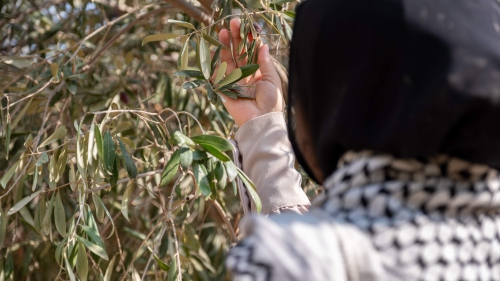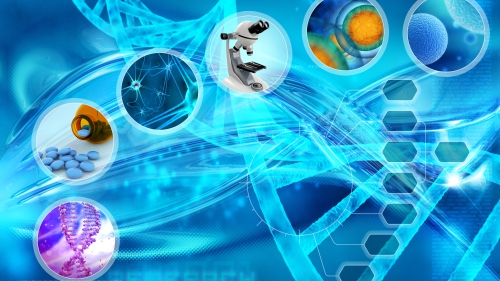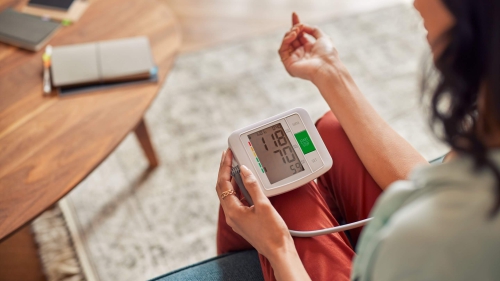Breast Cancer

“You have breast cancer.” These are words no woman ever wants to hear, and yet according to breastcancer.org, a non-profit that provides information and support to those touched by the disease, 1 in 8 women in America will develop invasive breast cancer over the course of their lifetime. It is the most common cancer among women and the second main cause of cancer death in women. Fortunately, with advances in science and technology, we can be aware of risk factors, utilize preventive measures, and know what outcomes to expect.
Similar to any other type of cancer, breast cancer occurs when a group of abnormal cells invade healthy cells in the body and form a malignant tumor. Atypical to other types of cancer is that breast cancer cells invade surrounding tissue and spread in the breast. In advanced stages, the cancer spreads to distant organs, including lungs, liver, bones, or brain. Although the causes of breast cancer are unclear, we know the two main risk factors, family history and advanced age, are beyond our control. Other lifestyle risk factors we can control are alcohol consumption, smoking, and maintaining an unhealthy weight.
Another known way to decrease the risk of developing breast cancer is by breastfeeding. Since breast cancer usually starts in the inner lining of milk ducts that supply milk for the infant, breastfeeding has the ability to prevent the invasion of cancerous cells. Breastcancer.org lists three main ways that breastfeeding protects breast health:
- making milk 24/7 limits breast cells' ability to misbehave
- most women have fewer menstrual cycles when they're breastfeeding (added to the 9 missed periods during pregnancy) resulting in lower estrogen levels
- many women tend to eat more nutritious foods and follow healthier lifestyles while breastfeeding
Islam encourages breastfeeding infants for two years. This recommendation was revealed to us long before any medical or technological advances discovered the innumerable benefits that nursing has on the mother and child. The Quran states, “Mothers may breastfeed their children two complete years for whoever wishes to complete the nursing [period]. Upon the father is the mothers' provision and their clothing according to what is acceptable. No person is charged with more than their capacity. No mother should be harmed through her child, and no father through his child…” (Quran 2:233). This verse proves to us that through God’s infinite mercy, He has not only provided a provision for the dependent newborn, but also a shield for the mother. This is not to say that every breastfeeding mother will be completely inoculated from the disease, but it does add a substantial preventive measure. As the Quran says, “Say, ’Never will we be struck except by what God has decreed for us; He is our protector. And upon God let the believers rely’.” (Quran 9:51).
Another preventive measure is to properly screen for the disease. In the United States, health classes for pubescent girls teach them how to perform self-exams in order to be alert for any lumps or abnormalities within the breast. Around the time of puberty, the female body develops breasts which consist of fat, lobules, connective tissue, and tiny milk glands. As the girl grows, she will be able to distinguish between normal breast growth and abnormalities within the breast. The American Cancer Society, which brands itself as being “On a mission to free the world from cancer,” by “conducting research, sharing expert information, supporting patients, and spreading the word about prevention,” says, “Finding breast cancer early and getting state-of-the-art cancer treatment are the most important strategies to prevent deaths from breast cancer. Breast cancer that’s found early, when it’s small and has not spread, is easier to treat successfully.”
According to Susan G. Komen, the world’s largest nonprofit organization that addresses breast cancer through research, outreach, and public policy initiatives, “Mammography screening is the most effective screening tool used today to find breast cancer in most women. However, the benefits of mammography vary by age.” Women between the ages of 45-50, are encouraged to start getting a mammogram every year. Healthy women over 50 and up to 69 years of age, are advised to get a mammogram every other year. For women 70 and older, the frequency can be spaced out by 2-3 years as long as all the previous mammogram results were normal.
After a positive diagnosis of breast cancer, a team of medical professionals may include a surgeon, medical oncologist, radiation oncologist, and plastic surgeon who will explain and implement a treatment plan that will hopefully be successful. Treatments will vary depending on the type and stage of cancer. Generally speaking, local treatments, affecting only the breast area without disturbing the rest of the body, are the first option. This includes targeted surgery and radiation therapy to remove the tumor. The secondary treatment is systemic which involves drugs that reach cancer cells throughout the body and are given either by mouth or directly pumped into the bloodstream. The common systemic drug treatments are chemotherapy, hormone therapy, and targeted therapy. Most women receive a combination of treatments, depending on the severity of the diagnosis.
Following treatment for breast cancer, the outlook for most patients is encouraging. The 5-year survival rate for women with stage 0 or I is close to 100%, according to the American Cancer Society. This proves that early diagnosis and intervention is crucial. Even for women with stage II and III, the 5-year survival rates are still high; 93% and 72%, respectively. For those with advanced stages, the outlook becomes less encouraging, but keep in mind that there are still various treatment methods available. Also, with developments in technology, treatment plans are always advancing, so whatever the case today, the future will likely be better.
Breast cancer is not exclusively a women’s disease; men can get it, too. Although rare, men who have a close relative diagnosed with breast cancer have a chance of developing the disease in advanced age. The odds of men developing male breast cancer increase if they have a history of radiation exposure to the chest, have enlarged breasts from hormone treatments, or have liver disease. Overall, breastcancer.org estimates that only 1 in 1,000 American men will develop the disease. In most cases, this male diagnosis is not fatal and can readily be treated.
Although most people afflicted with breast cancer are women, it is not only she who suffers. The impact of such a diagnosis extends to the spouse, children, siblings, extended family, co-workers, and community at large. This is because cancer patients need and rely on the support of those around them. In addition to the medical personnel in the hospital and clinic, psychologists and social workers are also essential members of the recovery team. In his book, Breast Cancer: Real Questions, Real Answers, Dr. David Chan, an oncologist with over twenty years of experience with breast cancer patients, says, “Supportive care is now recognized as having important value in minimizing the distress that goes with the diagnosis of breast cancer. Group and individual session therapy have become widely encouraged and accepted. Such care can help patients through their treatments and have very positive effects on their interactions with family and friends.”
Breast cancer does not discriminate; it can attack any woman at any stage of her life. But there are certain risk factors that are within our control, so we should take advantage of preventive measures in order to decrease our risk of falling victim to this ugly disease. Living in the twenty-first century, we also have the advantage of innovative medical care during and after a diagnosis. Family and community support for those touched by the disease also helps cushion the negative effects associated with the disease. Finally, it is equally important for us to trust God’s plan as supreme to our intentions or wishes. Despite the harsh reality that accompanies a breast cancer diagnosis, as Muslims, we know that God does not burden us with more than we can carry. Humans are resilient creatures; we fall, we get up. In the Quran, God says, “Did We not expand for you [O Muhammad], your breast? And We removed from you your burden, Which had weighed upon your back, And raised high for you your repute. For indeed, with hardship [will be] ease. Indeed, with hardship [will be] ease. So, when you have finished [your duties], then stand up for worship.” (Quran 94: 1-8).
About the Author: ASMA JARAD is a writer and editor. She recently began a YouTube channel narrating children’s picture books to help instill pride and confidence in Islam and personal heritage among the youth. Catch her on YouTube and Facebook: Sami & Amro Reading Time.
Reprinted from the Summer 2018 issue of Halal Consumer© magazine with permission from the Islamic Food and Nutrition Council of America (IFANCA®) and Halal Consumer© magazine.

















